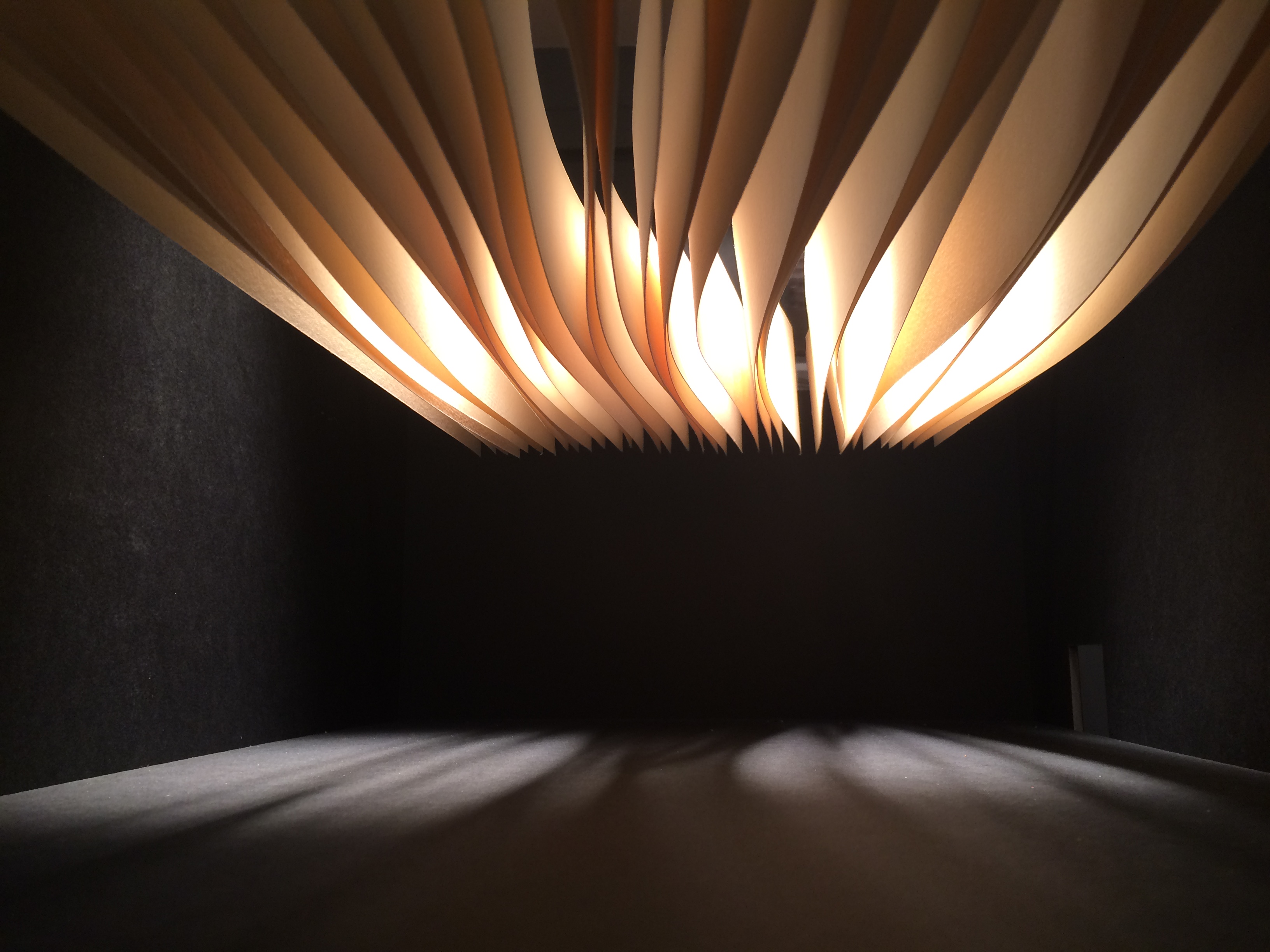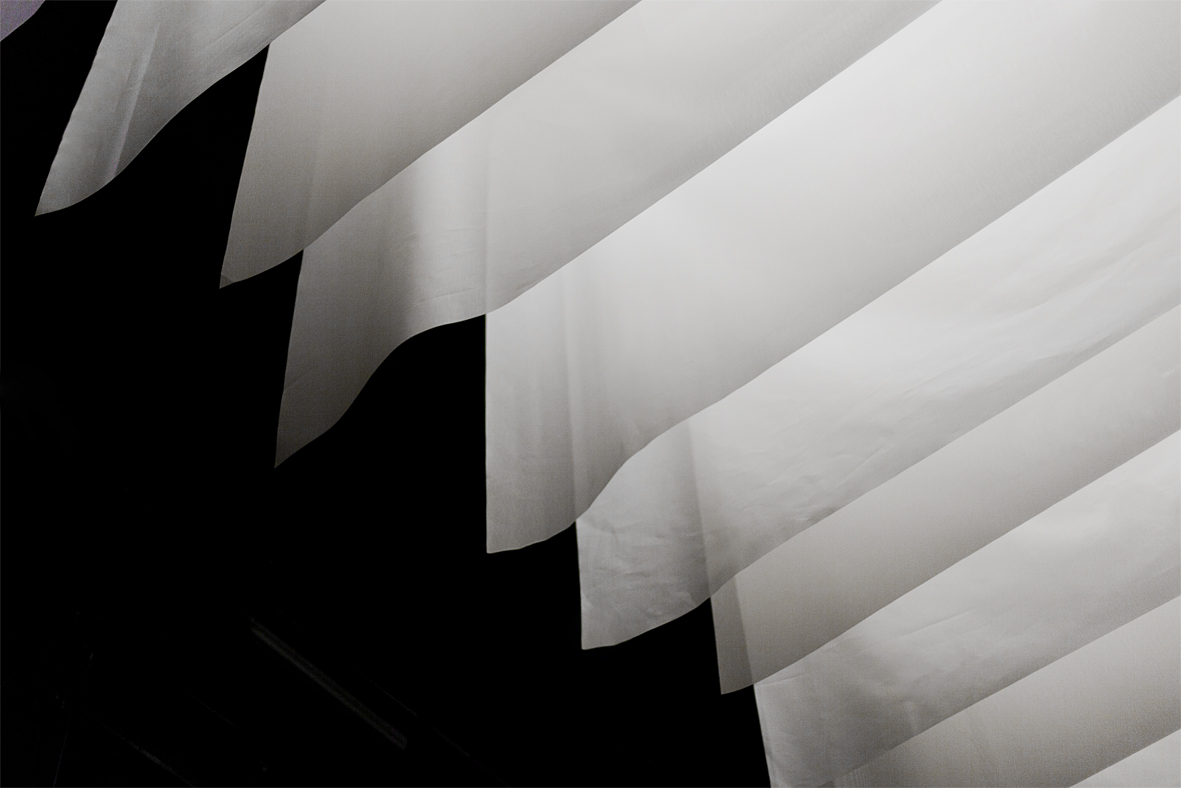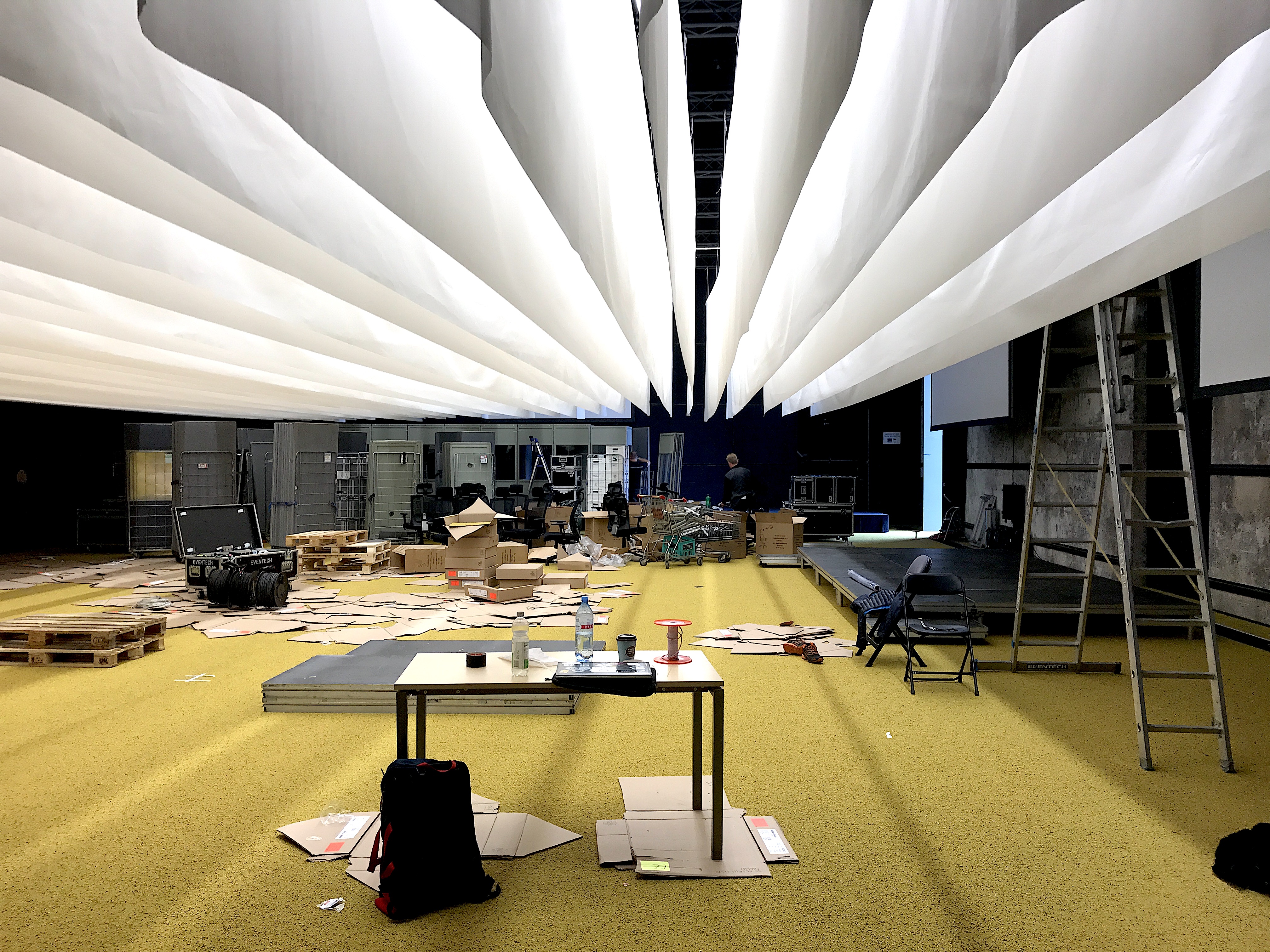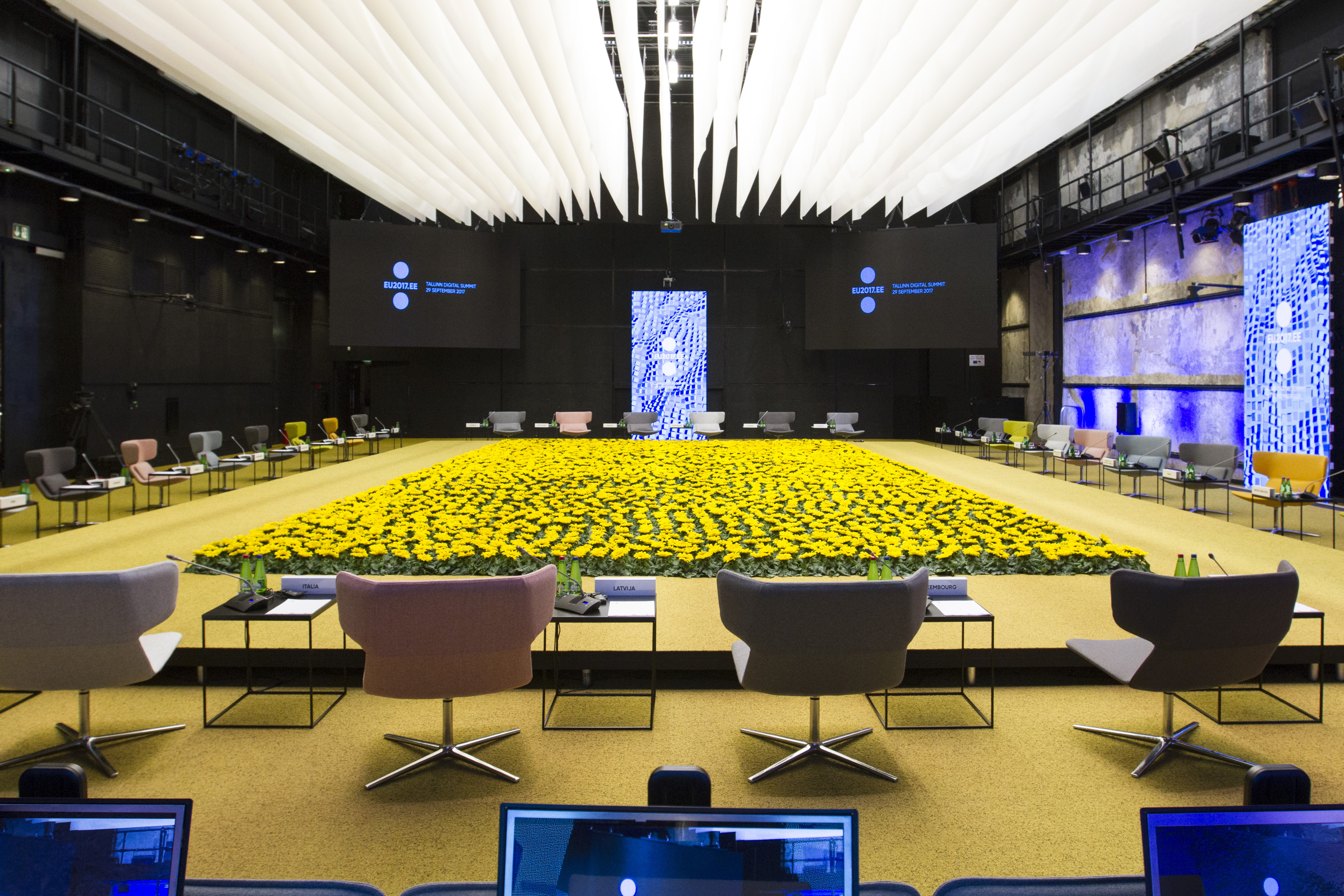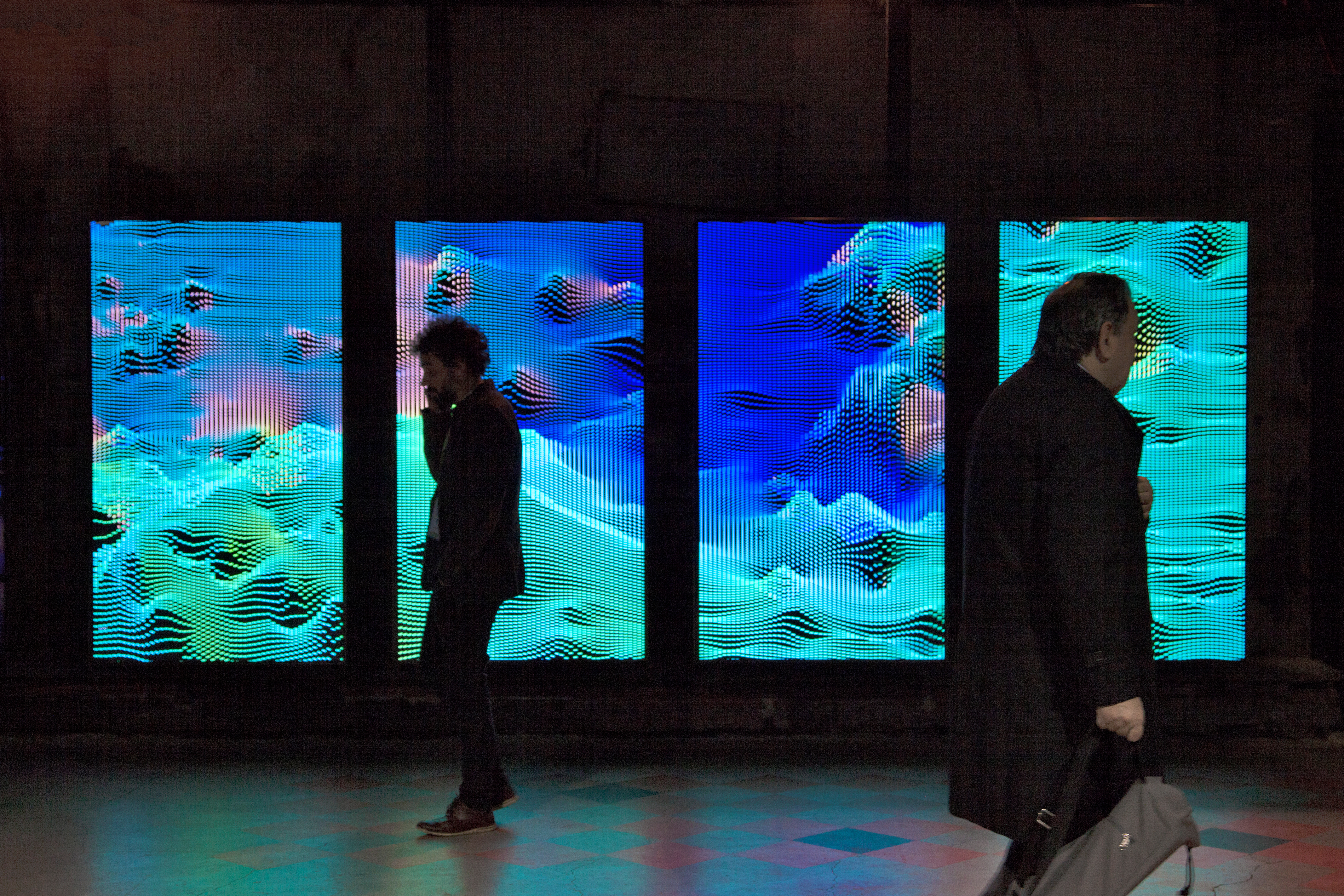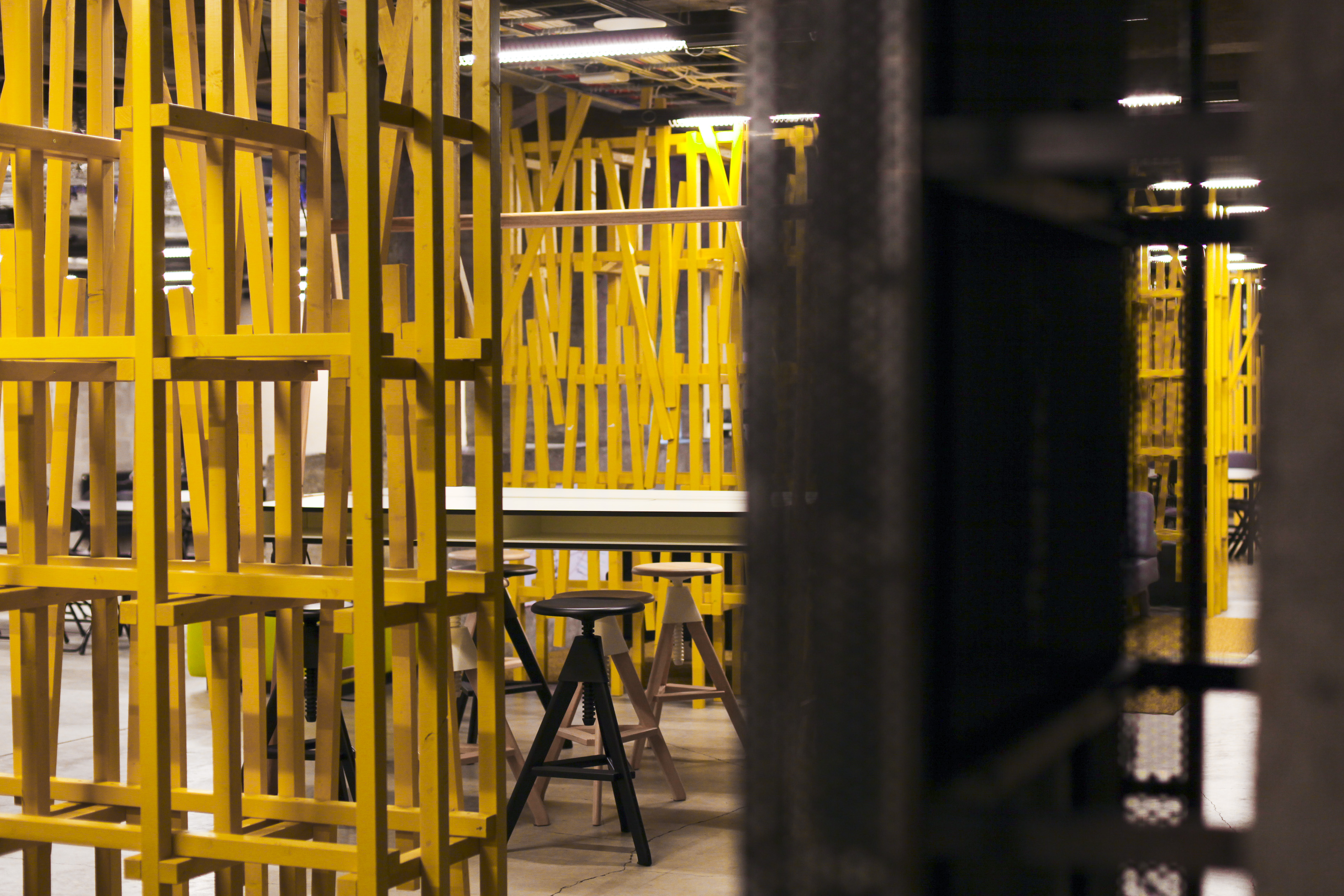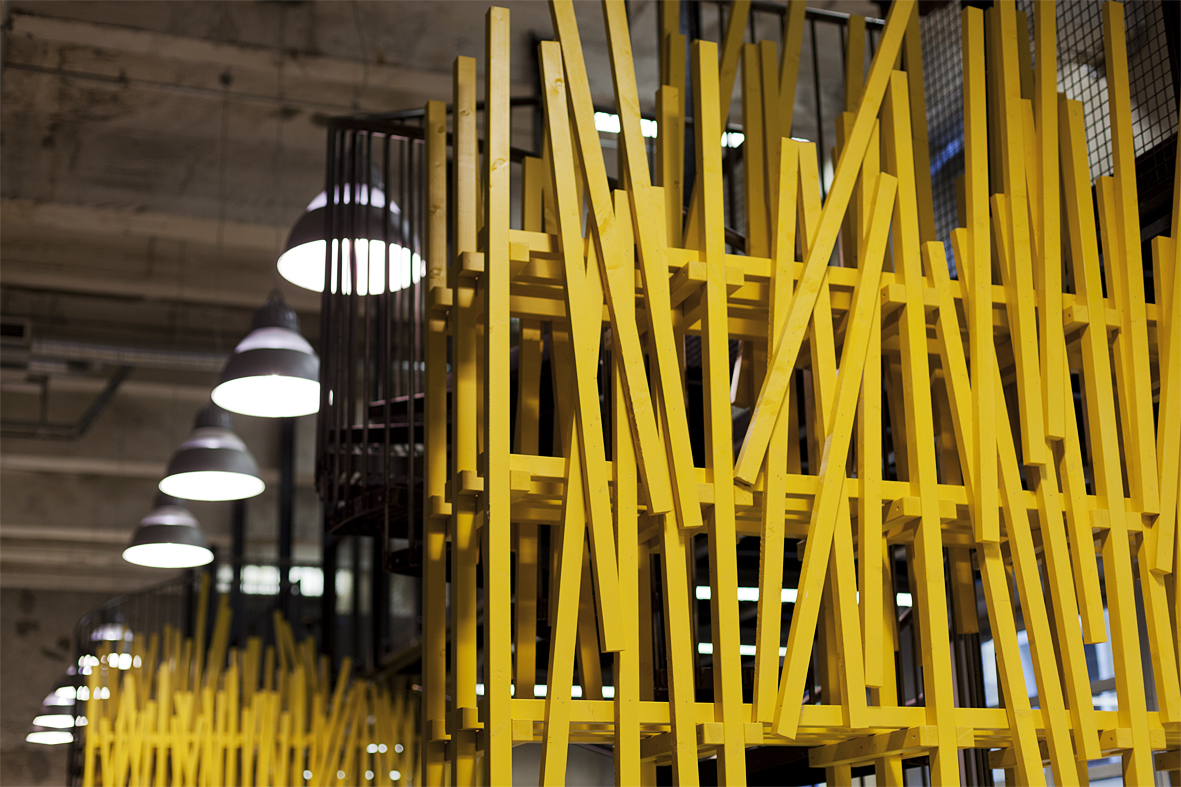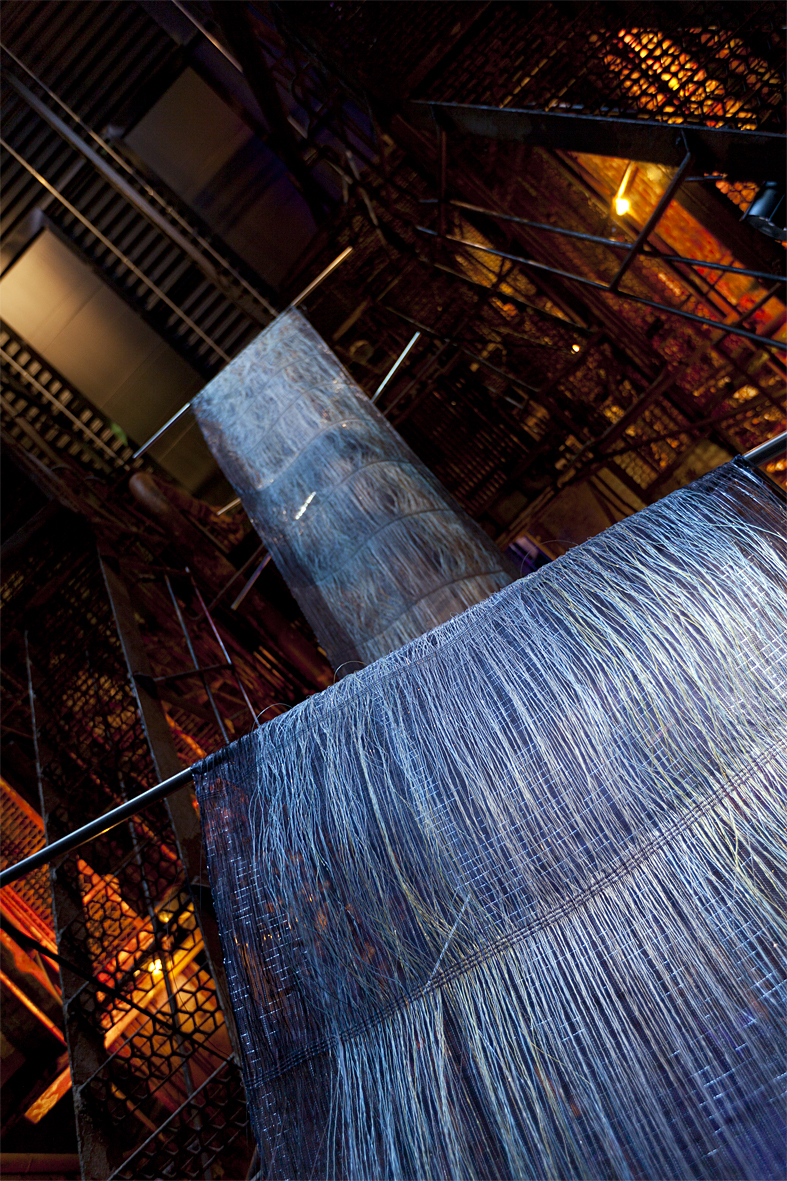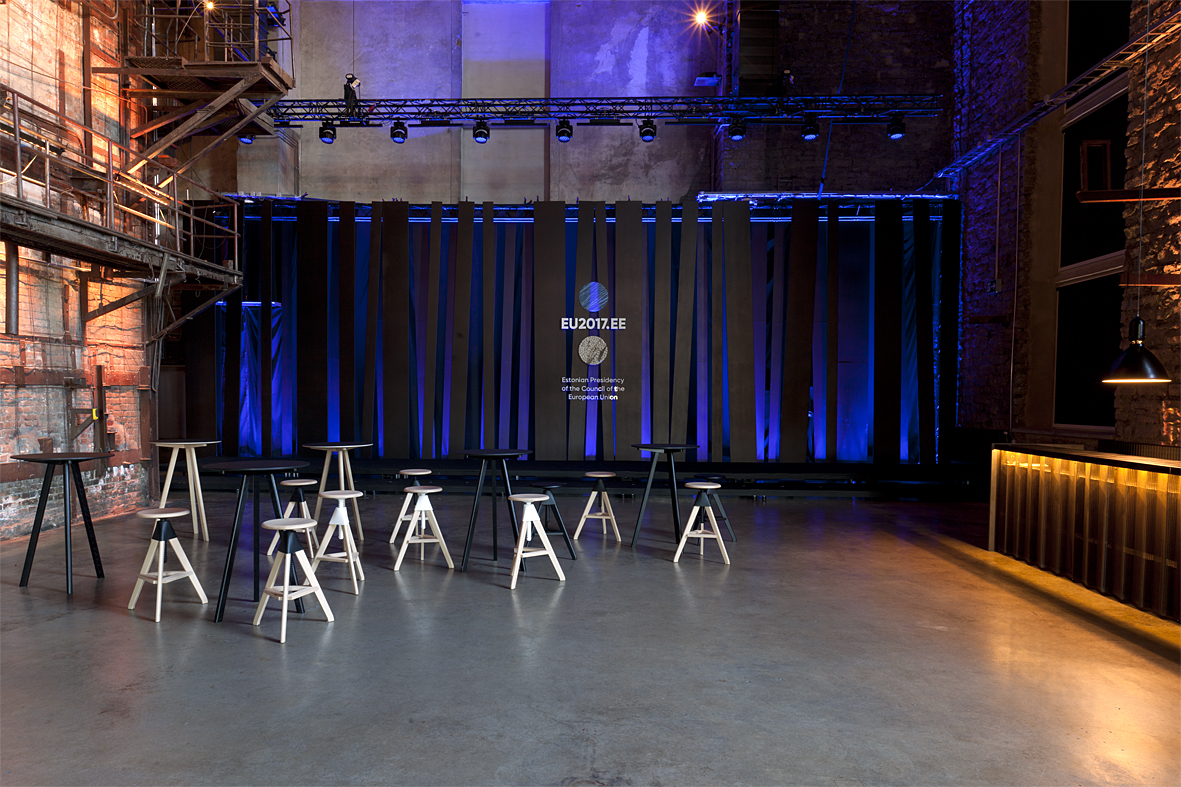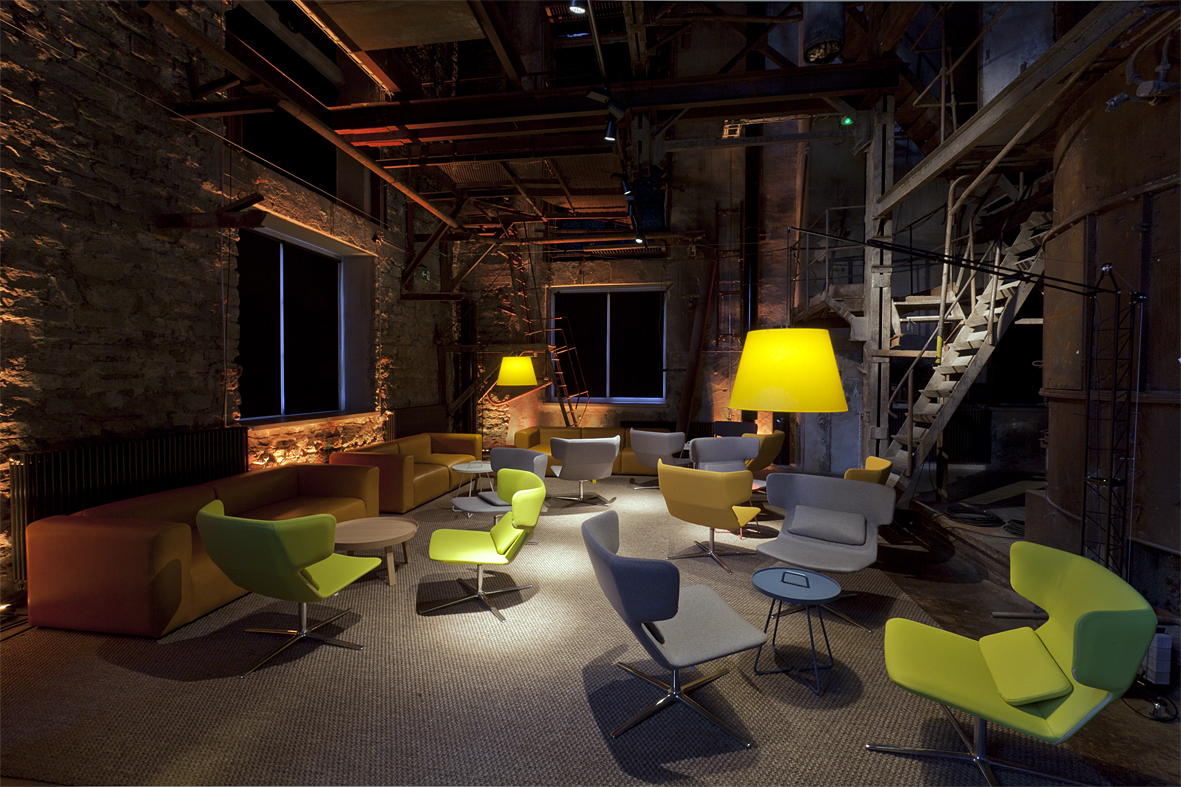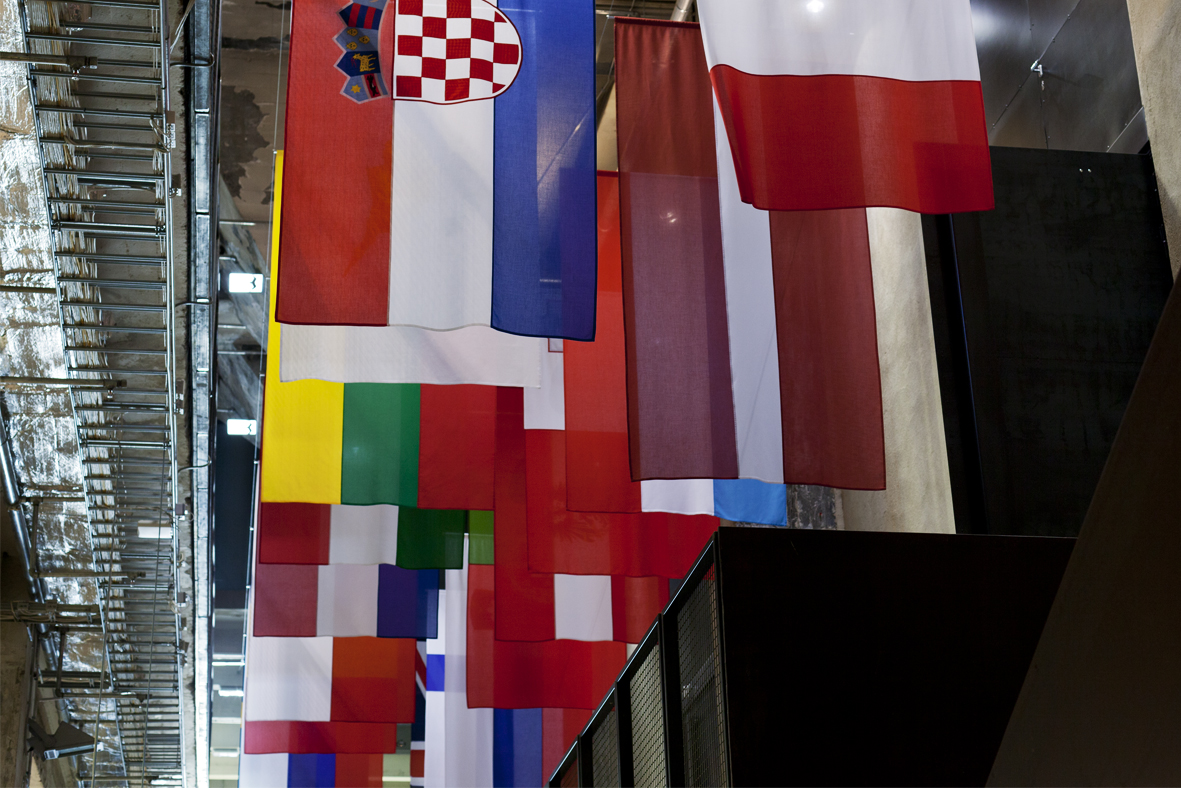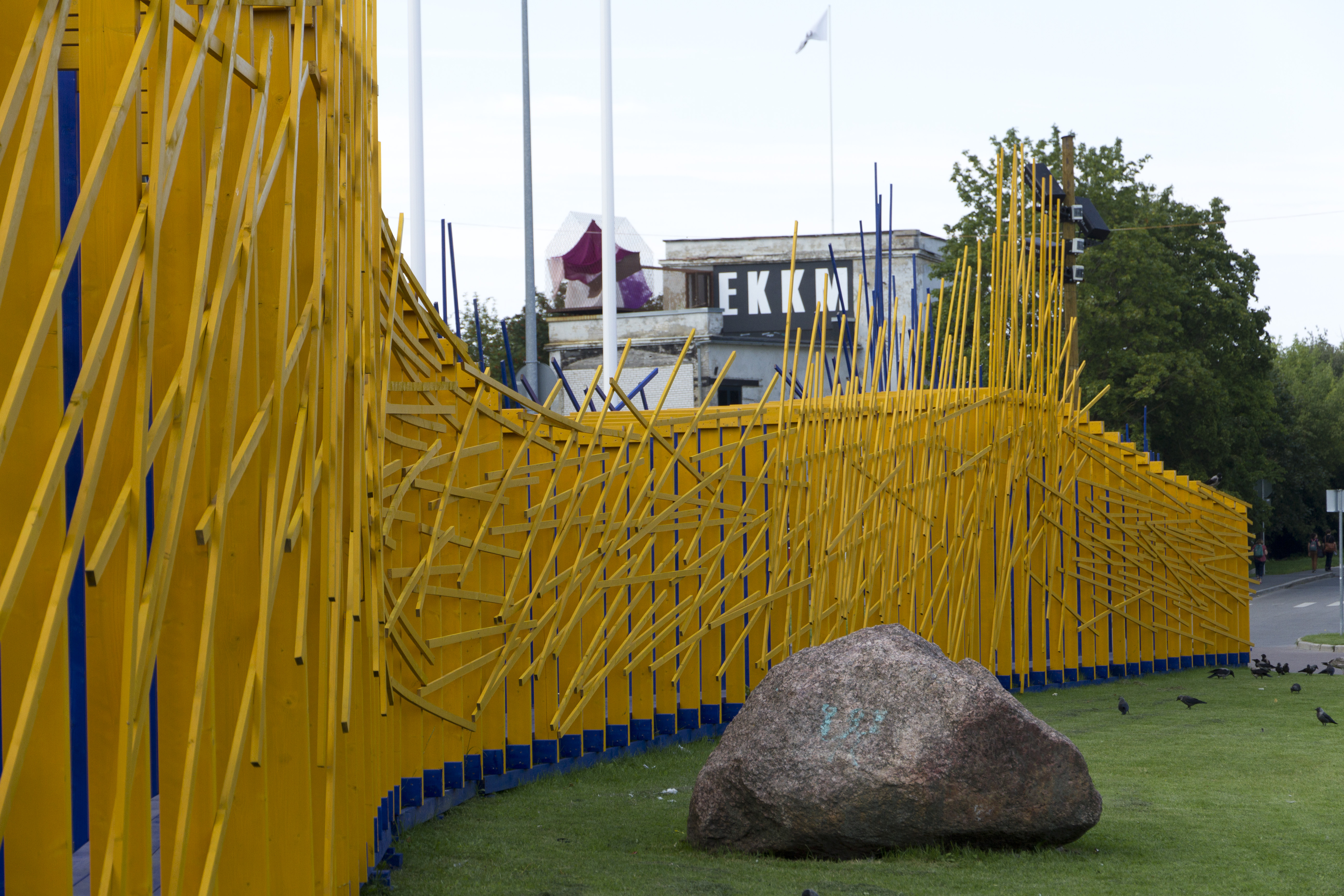The Design of the Venue of the Estonian Presidency of the Council of EU
- Ann Mirjam Vaikla
- Tüüne-Kristin Vaikla
- Urmo Vaikla
Location: Tallinn, Estonia
Authors: Urmo Vaikla, Tüüne-Kristin Vaikla, Mikk Meelak
Vaikla Studio in collaboration with Platvorm
The Vaikla Studio team: Urmo Vaikla, Tüüne-Kristin Vaikla, Ann Mirjam Vaikla, Kaia Tungal, Elo-Liis Parmas, Kadri Tikerpuu
The Platvorm team: Mikk Meelak, Raul Kalvo, Marti Kaljuve, Mikk Pärast, Andreas Wagner, Agnes Ratas
In the Tallinn Creative Hub (Kultuurikatel) Estonia introduces itself, through a visual design concept, as an innovative e-state where mobile opportunities have found novel, working solutions. In urbanist Europe, green Estonia holds attractive and untouched natural resources skilfully intertwined with the potential of the digital world. Seamlessly connected technology and creativity, pulsating in the modern flowing rhythm of life, form the message Estonia is using to present itself as the holder of the Presidency of the Council of the European Union.
IDEA & SPACE
Installation-based, interactive solutions
The industrial atmosphere characteristic of the Tallinn Creative Hub, is enhanced with the addition of a digital level – visualising the dynamics of nature, such as the movement of air or the flowing of water. With the help of a digital impulse from wind speed from the Ristna weather station in Hiiumaa and wave height from Tallinn Bay, the digital screen wall, the illuminated textile (Power Station), and the kinetic illuminated ceiling of the main meeting hall
(Engine Hall), are activated. The starting point for the activation of these solutions is technologically similar in data, which is expressed through the characteristic means of each object – the installation of digital screens through interactive hyper-abstractions, the digital textile through a delicate play of light, and the kinetic illuminated ceiling activates as a digital spatial object.
Adapting such a historic building into a modern working environment with a startup feel, brings out the spatial characteristics and historic details of the building. This has been completed with the help of modern design solutions inspired by the untouched forests and yellow rapeseed fields of Estonia. The inclusion of innovative design in the creation of a functional space provides a brief bird’s-eye view of the history of Estonian furniture, from traditional Saaremaa beach chairs and innovative bent plywood seating made by the Luther factory, to today’s furniture, lighting, and design elements. The space flexibly directs the movement and communication of anyone present, where pause and tempo interchange dynamically.
The combined effect of these solutions and interactive surfaces ties the Tallinn Creative Hub, into a conceptual whole, which provides guests with the opportunity to relate to Estonian nature and a sense of site-specific identity, while also adapting the space into a synergic meeting place.
